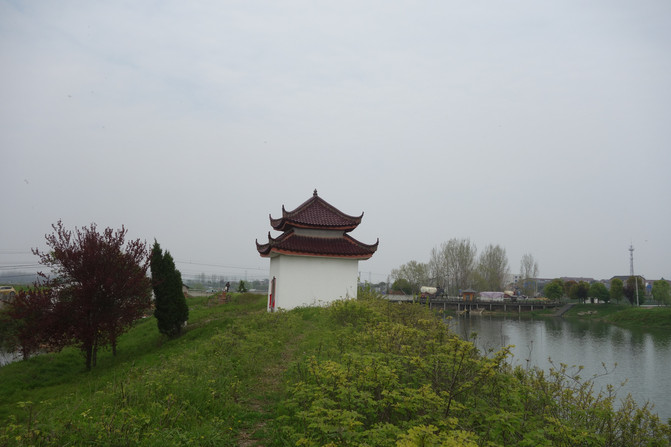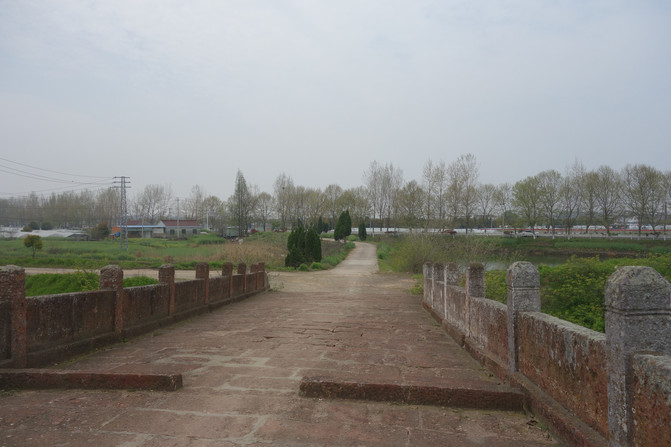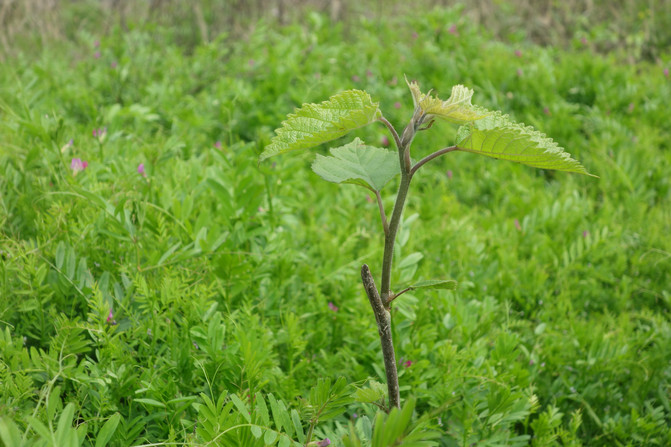Nanjing people look at Nanjing--Lishui Ancient Bridge Putang Bridge
Putang Bridge
Address: Putang Community, Honglan Street, Lishui District, Nanjing City
Tickets: Free
Walking time: 2020.4
Walking method: self-driving
The last time I went to Shixia Village in Lishui, I brought back a brochure for Lishui tourism at the tour center. The weather is good today, so I want to go for a walk in Lishui again. He was not interested in modern manors and the like, so he discovered this Putang Bridge. It is said that it was built during the Zhengde period of the Ming Dynasty and is the largest ancient bridge in Lishui. Putang Bridge is located northeast of Shijiu Lake. After taking a look at this ancient bridge, you can go to Shijiu Lake for a walk. Navigation "Putang Bridge" to depart. Drive on a series of highways and turn to Provincial Highway 123 to Putangqiao Avenue. Cross a small highway bridge and guide the destination. Stop the car in a slightly spacious place on the road near the bridge. I am very confused, it cannot be this road bridge! Take your camera and look for it. Near the bridge head of the highway bridge, it is easy to find a stone arch bridge not far from the east side of the highway bridge. There is a two-story temple with eaves on the dam. It must be it. We walked into it along the overgrown dam.

Leaving the highway bridge, there was peace and silence. The Putang Bridge with beautiful curves quietly appears before our eyes.

Looking back at the temple on the dam and the lively and busy road bridge where we came.

The simplicity of this bridge exceeds my imagination. The original ecological bridge has not undergone modern decoration and restoration, but has an original and original simplicity.

The two black birds on the bridge pillar, like myna, were not disturbed at all. They stood at the bridge for a long time with peace of mind. Because no one was disturbed.

Come to the west side of the bridge, face the bridge body directly, arched, and the bridge is five or six meters wide. There are several gentle stairs up to the bridge, and in the middle of the stairs are three basalt ramps. Convenient for walking in various ways.

Although the carvings on the railings have been blurred by time and wind and rain, they are still vaguely recognizable. Each guardrail stigma is carved with different patterns, facing each other. The decorations are decorated with animals, auspicious clouds, ancient temples, pavilions, eight knots...

Lean against the bridge railing and look at the flowing Sancha River under your feet.

The river is open, and on the east side of the river is a large greenhouse. There are also fishermen's breeding areas in the river. The water town is so rich.

Standing on the Putang Bridge, from this angle, you can more clearly see the Putang Bridge, which now carries traffic tasks on its west side.

It has been 500 years since the Putang Bridge was built. When highways were built in the early 1930s, the bridge was used as a highway bridge. Later, the traffic volume increased sharply, exceeding the load capacity of the bridge, threatening the safety of the bridge. The bridge stopped vehicles and was only used by pedestrians. The old bridge under our feet is now a national key cultural relic protection unit.

Off the bridge, the village roads on both sides of the bridge lead us into the pastoral scenery.

Why does this bridge give people such a simple feeling? Look at its bridge body, which is made of volcanic tuff. Now the rock mass has been weathered, with some rubble peeling off the surface, and moss growing on the surface. The moss on the railing has also solidified into "fossils" due to its age, forming el-coin-shaped green and colorful "age spots".

Although the red sand stones on the bridge deck still look neat, they also expose the pebbles embedded in their bodies.

I wonder if you can see this "five-star" mark on the mottled wall from the picture.

The flowing water under the bridge flows quietly. The stillness here allows us to hear the sound of flowing water, as if it allows us to listen to 500 years of Cangsang history.

It stands here silently. Looking at the changes on both sides of the Putang Bridge in ancient and modern times, it confirms the changes of history, the changes of the times, and the changes of people's lives.

Get off the bridge and walk on the embankment on the west side of the river,

The vegetation touched by the river is very special.

With the bridge as the background, this picture feels richer.

Enjoy it from all angles-Putang Bridge. There is grass growing between the stone cracks in the bridge body, and moss is covered on the stone surface of the bridge piers. All of this bears traces of history.

From this angle, you can clearly see the whole picture of Putang Bridge. The Putang Bridge across the river is a nine-hole continuous flat arch bridge. There are eight bridge piers with watershed tips under the bridge. Among the nine holes on them, the central hole is the largest, with a span of 10.6 meters, and the holes on both sides are gradually shrinking. The arch stones are laid side by side with hingeless links.

Putang Bridge, silent in the deserted wilderness, has gone through ups and downs together with the surrounding villages.

At Putang Bridge in silence, the gurgling river water is moving and still, waiting for this land day after day.

The river water nurtures the surrounding fertile land, hard-working villagers, and beautiful villages.


stand out

outshines others

The earth temple on the dam protects it here to ensure peace.

In addition to this ancient bridge, Putang Bridge also has a very distinctive temple fair-Putang Bridge Temple Fair. The Putang Cishan Temple Fair is a large-scale cultural sacrifice held by local people to commemorate Zhang Bo (also known as the Great Emperor of Cishan), a water-control expert in the Three Kingdoms. It is also a unique folk cultural activity spontaneously organized and entertaining by the masses. It has a history of nearly 550 years. The Putangqiao Temple Fair was included in the "Municipal Intangible Cultural Heritage Protection Project" in 2007 and included in the Provincial Intangible Cultural Heritage List in 2009. It is currently applying for national intangible cultural heritage. Such a temple fair is very exciting. However, this year's March 26th lunar month, the traditional epidemic may be suspended due to the epidemic. I will come here for a temple fair on March 26th of the lunar calendar next year to experience the Putangqiao temple fair, which is even more lively than the Spring Festival.

The two of us just went up and down the Putang Bridge to admire it and take photos without anyone disturbing it. Just as we were about to leave, a pair of travelers about our age came. They feel the same as us. In such a quiet place, the soul is extremely comfortable. They haven't returned to work yet, but because they couldn't leave Nanjing City during the epidemic, they searched the Internet for a quiet place where there were fewer people to go out. After a brief chat, we left and headed for Shijiu Lake. Leave this place to the two of them and let them enjoy the tranquility and beauty of Putang Bridge alone.
Previous Article:Out of the circle ~ Nanjing is about to open Shenxian Hotel (recommended collection)
Next Article:Pioneer Bookstore in my eyes--Pioneer Garden Expo Park Silo Bookstore
